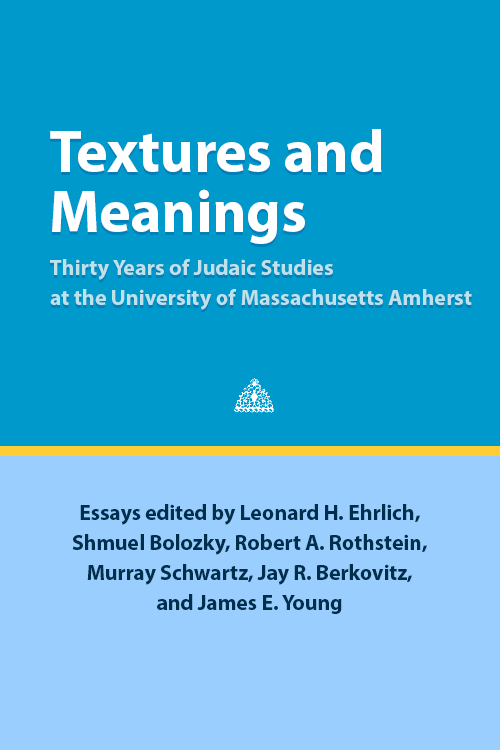Rereading the Sources: New Visions of Women in Medieval Ashkenaz
Judith R. Baskin
This chapter is part of: Leonard H. Ehrlich et al. 2004. Textures and Meanings: Thirty Years of Judaic Studies at the University of Massachusetts Amherst
Download Chapter| Description |
|---|
| In the next essay, Judith Baskin focuses on the rules governing ritual immersion within medieval Ashkenazic culture. Baskin explores “the extent to which [medieval rabbis] have written their own piety on the bodies of their wives.” In other words, the rules governing ritual immersion, written by men, serve primarily to guarantee men’s purity by regulating the timely obedience of women in their visits to the mikveh. These rules are meant to reconcile purity and passion, and women need to observe timely immersion to protect men both from sin and from their own fantasies of uncontrolled women’s sexuality. The rules, however, can cut both ways. Women can exhibit certain powers by refusing ritual immersion in order, for example, to extricate themselves from an untenable marriage. Alternatively, the claim of the wife’s violations could also support a husband’s desire to avoid returning his wife’s ketubah payment. Baskin points to the tensions revealed in the use of these rules, and reminds us that, although piety was “gendered as male,” between the eleventh and thirteenth centuries, women in Askenaz enjoyed high status and economic importance. |
